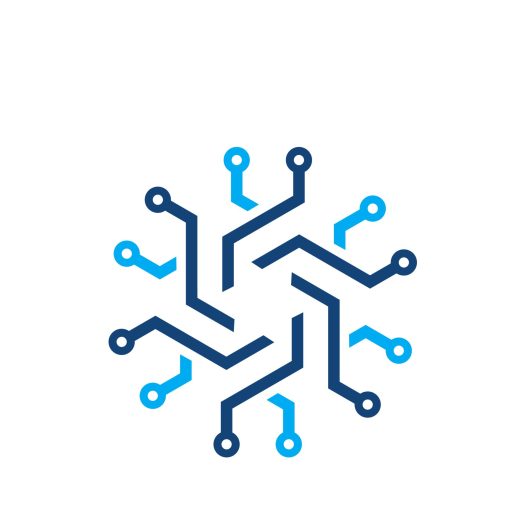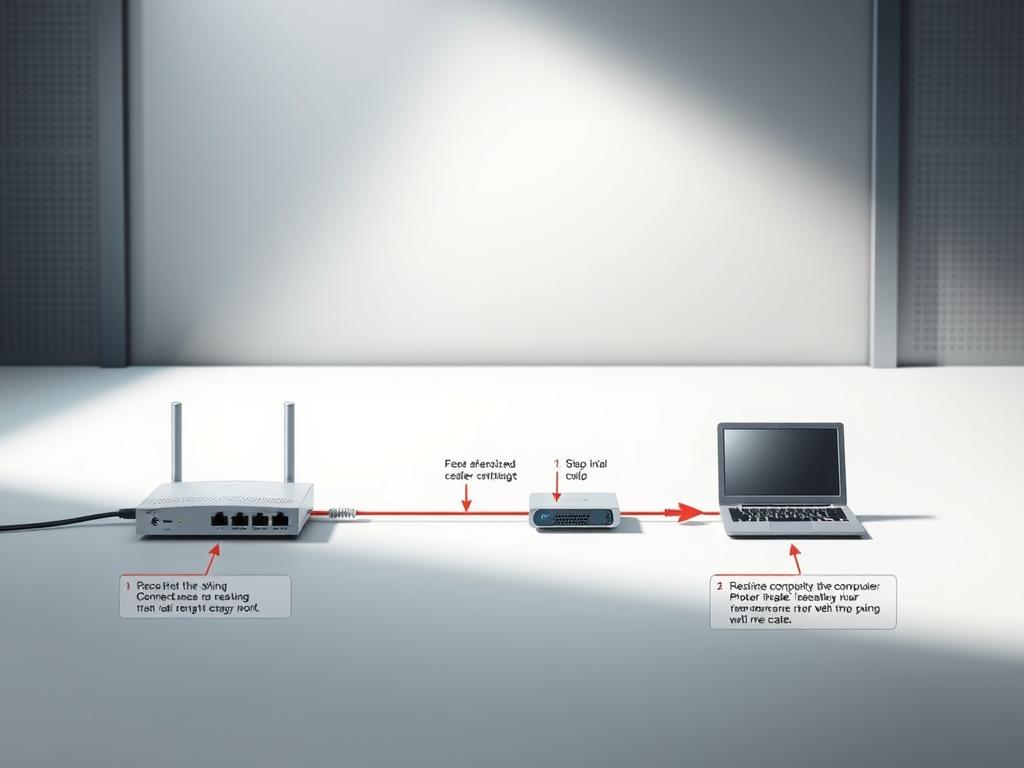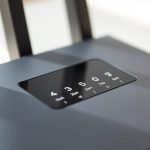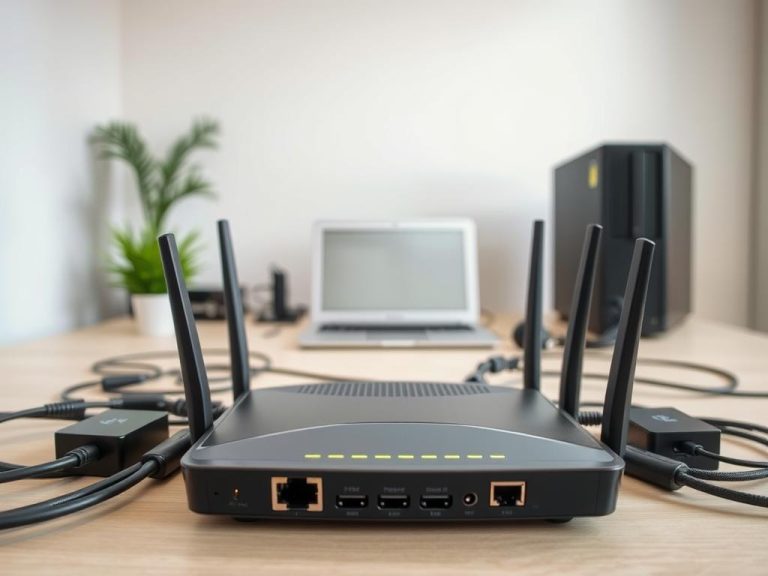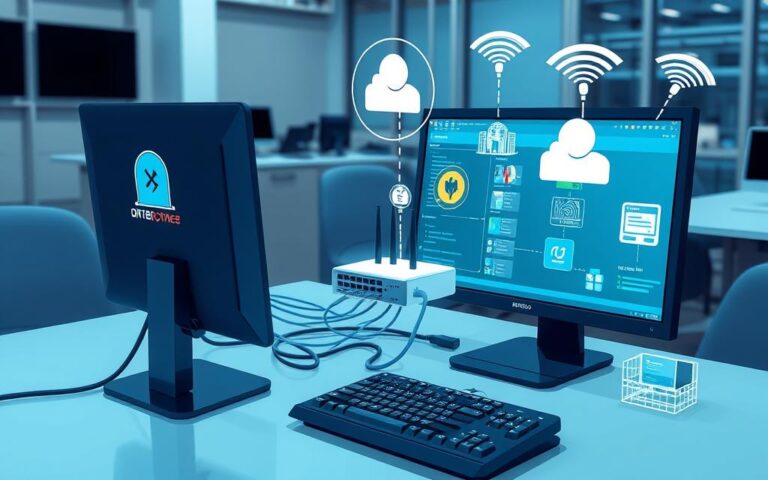How to Connect to Another Computer on a Different Network
Remote computer connectivity is vital in today’s digital world. It allows people to access computers across different networks with ease. Remote access solutions have grown by 25% yearly in remote work settings.
To connect computers, you need to know about remote access tech. Windows is the top platform, used by 75% of desktop users. But not all Windows versions support native remote desktop features.
Modern remote access tools work with many devices. The RDP client for mobiles has over 10 million downloads. This shows people want easy-to-use connection options.
Security is key when connecting networks. About 70% of IT pros worry about remote access safety. It’s crucial to use strong protection measures.
Mobile remote access demand has jumped by 40%. This reflects changes in how we work. Many firms now use these tools for work and teamwork.
As remote work grows, knowing how to connect networks is more important than ever. It’s a skill professionals in many fields need to master1.
Understanding Network Connection Basics
Computer networks are vital for modern digital communication. They connect devices across different locations. These systems have grown since their 1950s military beginnings23.
Networks come in various types and configurations. Each type meets specific communication needs. Knowing these network types is key for good digital connectivity.
Exploring Network Connections
Different network types serve unique purposes in digital communication:
- Local Area Networks (LANs): Connect computers within a single building or campus2
- Wide Area Networks (WANs): Connect computers across large geographical regions2
- Metropolitan Area Networks (MANs): Span larger areas than LANs, often managed by cities2
- Personal Area Networks (PANs): Serve individual device connectivity2
Network Protocols and Communication
Network protocols ensure smooth device communication. The TCP/IP model is a key framework for data travel2. It includes four critical layers:
- Network Access Layer
- Internet Layer
- Transport Layer
- Application Layer
Network Security Fundamentals
Strong network security protects digital infrastructure. Modern solutions use advanced security like encryption protocols and multifactor authentication2.
Effective network design balances connectivity, performance, and security.
Key security parts include firewalls and intrusion detection systems. Secure communication protocols also monitor and control network traffic3.
Essential Prerequisites for Remote Computer Access
Setting up remote access needs careful network preparation. Several critical requirements ensure secure and reliable connectivity. Network setup involves strategic steps to link different computer systems.
Before starting remote access, users must address key network aspects:
- Configure router settings for port forwarding4
- Ensure stable internet connectivity
- Verify firewall configuration5
- Set up appropriate user permissions
Firewall setup is crucial for network protection and accessibility. About 70% of home routers support port forwarding for external PC access4.
Careful configuration is essential to balance security and connectivity.
| Requirement | Description | Recommendation |
|---|---|---|
| Port Configuration | Open specific ports for remote access | Use standard Remote Desktop port 33896 |
| Security Measures | Protect against unauthorized access | Implement multi-factor authentication5 |
| Network Stability | Ensure consistent connectivity | Consider Dynamic DNS solutions4 |
Security is vital when setting up remote connections. Over 80% of unauthorized access attempts happen through open ports4.
IT experts suggest using VPN solutions. These can cut unauthorized access risks by up to 90%4.
How to Connect Other Network Computer
Connecting computers across networks requires careful setup. This involves configuring network discovery, file sharing, and user permissions. These steps ensure secure and efficient remote access between computer networks.
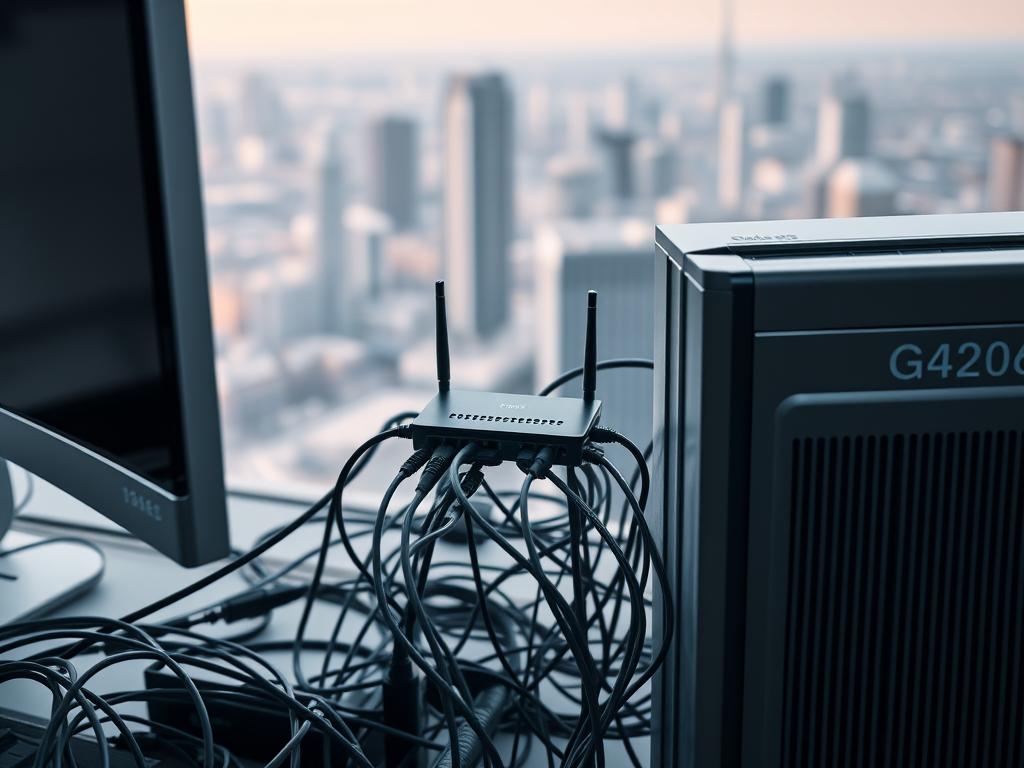
Network discovery is vital for remote connections. Windows users can enable this in system settings. This allows computers to identify and communicate with each other7.
The process involves checking network configurations. It also ensures proper visibility across different network environments8.
Enabling Network Discovery
To activate network discovery, follow these essential steps:
- Open Control Panel
- Navigate to Network and Sharing Centre
- Select “Change advanced sharing settings”
- Turn on network discovery for your preferred network profile
Configuring File and Printer Sharing
File sharing needs careful setup to protect sensitive data. Users must carefully manage sharing permissions to maintain network security9.
Remote access tools like Chrome Remote Desktop offer smooth connectivity. These work well across different platforms7.
Setting Up User Permissions
Strong user permissions are crucial for secure network access. Administrators should set up:
- Unique user accounts
- Strong password policies
- Multi-factor authentication
- Encryption protocols
Proper user permission management prevents unauthorized access and protects network resources.
Careful implementation of these strategies creates secure connections. This approach ensures efficient links between computers on different networks8.
Remote Desktop Connection Setup
Remote desktop tech lets users control computers from afar. This skill is vital in our digital world. It offers flexibility for personal and work use10.
Setting up a remote desktop involves key steps. These include port forwarding and dynamic DNS. Windows offers solid remote options across editions10.
Port Forwarding Essentials
Port forwarding is crucial for remote desktop links. It allows outside traffic to reach a specific computer inside a private network.
- Identify the correct remote desktop port (typically 3389)10
- Configure router settings to map external ports to internal IP addresses
- Ensure proper security protocols are in place
Dynamic DNS Implementation
Dynamic DNS solves changing IP address issues. It provides a steady domain name for remote access. Users can connect to their computers despite IP fluctuations.
Security Considerations
Remote desktop links need strong security measures:
- Enable Network Level Authentication (NLA)10
- Use strong, unique passwords
- Limit administrative access10
Protecting your remote desktop connection is paramount in preventing unauthorized access.
| Platform | Remote Desktop Compatibility |
|---|---|
| Windows | Pro and Enterprise editions10 |
| Mac | Compatible with Microsoft Remote Desktop app10 |
| Mobile | iOS and Android support10 |
Careful use of these strategies ensures secure remote desktop links. This applies across various platforms11.
VPN Solutions for Secure Network Access
Virtual Private Networks (VPNs) offer robust solutions for secure connections and network privacy. They allow users to access remote networks with enhanced protection. The rise of remote work has dramatically increased the importance of VPN setup strategies.
Modern VPN solutions offer multiple connection approaches:
- Remote access VPNs for individual users
- Site-to-site VPNs for connecting entire networks
- Cloud-based VPN services
OpenVPN is an industry-standard solution, supporting advanced authentication methods and ensuring network security12. It provides comprehensive protection with features like two-factor authentication. The platform also supports various security protocols12.
Key considerations for VPN implementation include:
- Encryption strength
- Authentication mechanisms
- Network performance
- Scalability of solution
Businesses must prioritise secure connections that protect sensitive information while maintaining flexibility13. The trend is moving towards integrated security approaches like Secure Access Service Edge (SASE). SASE combines networking and security functions13.
Effective VPN solutions balance security, performance, and user experience.
Organisations should regularly update their VPN infrastructure for optimal network privacy. They should assess potential vulnerabilities and implement multi-layered security strategies14.
Troubleshooting Common Connection Issues
Network troubleshooting is vital for smooth digital connectivity. Yearly, 90% of businesses face network downtime. These disruptions can cost millions per hour.
Systematic network diagnostics help solve issues quickly. About 70% of IT pros believe a methodical approach speeds up problem-solving. Effective network troubleshooting can greatly reduce downtime for digital-dependent organisations.
Human error causes 60% of network outages. Skilled network administration is crucial. Companies with dedicated troubleshooting staff can halve network interruptions.
Specialised tools can boost efficiency by 40%. They can cut average resolution times from 4 hours to 1.5 hours.
75% of network admins say detailed records improve future problem-solving. Robust protocols and comprehensive logs help prevent connection errors and minimise disruptions15.
FAQ
What are the different types of network connections?
Network connections include Local Area Networks (LAN), Wide Area Networks (WAN), and Virtual Private Networks (VPN). LANs connect devices in a limited area. WANs cover broader geographical regions. VPNs provide secure remote access across the internet.
How do I enable network discovery on my computer?
To enable network discovery, go to your computer’s network settings. For Windows, navigate to Control Panel > Network and Sharing Centre > Change advanced sharing settings. Turn on network discovery to make your computer visible to other devices.
What are the essential prerequisites for remote computer access?
Key prerequisites include a stable internet connection and properly configured router settings. Installed remote access software and correctly configured firewalls are also necessary. Both computers must have the proper permissions and network settings for a secure connection.
How can I set up a secure Remote Desktop Connection?
Configure port forwarding on your router and implement Dynamic DNS for consistent access. Use strong passwords and enable network-level authentication. Always use encryption and limit remote access to trusted IP addresses.
What are the benefits of using a VPN?
VPNs offer enhanced security, privacy, and remote access to network resources. They encrypt your internet connection and protect against potential cyber threats. VPNs allow you to appear as if you’re accessing the network from a different location.
How do I troubleshoot common network connection issues?
Check your internet connection and verify network credentials. Ensure firewall settings aren’t blocking access. Review network configuration settings and restart networking devices. Check for IP address conflicts or authentication problems.
What network protocols are most important for remote connections?
Crucial network protocols include TCP/IP, HTTP/HTTPS, FTP, and RDP. TCP/IP is fundamental for internet communication. HTTP/HTTPS handles web communication. FTP manages file transfers. RDP is essential for Remote Desktop Protocol.
How can I secure file and printer sharing across networks?
Set up user permissions and use strong passwords. Enable encryption and limit access to specific user accounts. Configure sharing settings to restrict access to trusted users. Implement network-level security measures for added protection.
Source Links
- [How-to] Remote Access PC on Same Network or Different Network
- What Is Computer Networking? | IBM
- Basics of Computer Networking – GeeksforGeeks
- Remote Desktop – Allow access to your PC from outside your network
- How To Remotely Access Another Computer
- Remote Desktop clients FAQ
- How to Control someone Else’s Computer with Efficient Solutions
- How to Remotely Access a Computer on a Different Network
- Access another computer with Chrome Remote Desktop – Computer
- How to Use Microsoft’s Remote Desktop Connection
- Remote Desktop Connection from different network
- Secure Remote Access VPN for SMBs | OpenVPN
- What Is a Remote Access VPN?
- What Is a Remote Access VPN? | Fortinet
- A Guide to Network Troubleshooting
